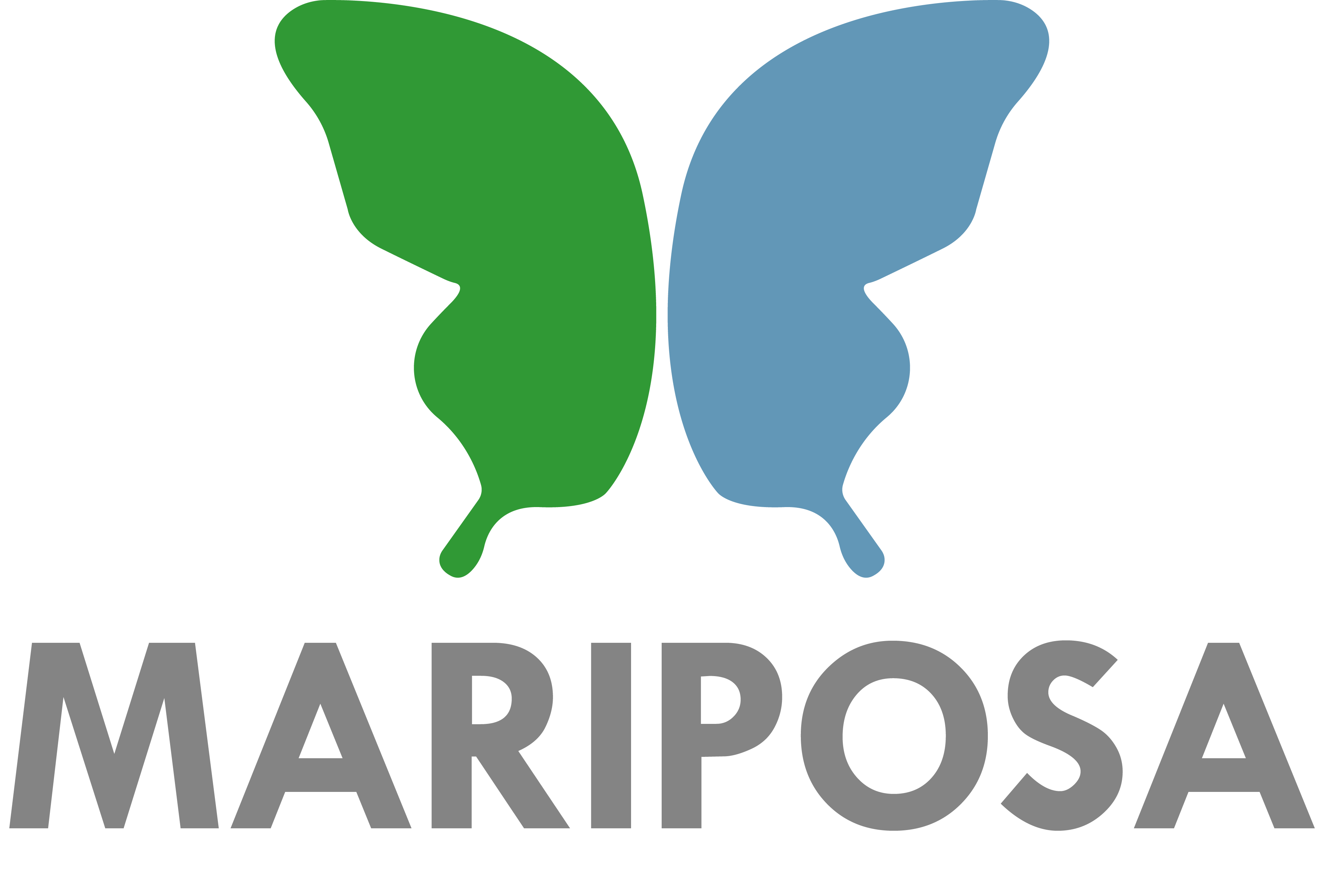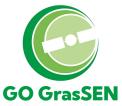
MARIPOSA Operational Group: Improving Andalusian agriculture by collecting and optimizing water and carbon footprint parameters using artificial intelligence systems
- Type Operational group
- Status In progress
- Execution 2023 -2025
- Assigned Budget 290.550,00 €
- Scope Autonómico
- Autonomous community Andalucía
- Project website GO MARIPOSA
The results obtained from the deployment of the agricultural sensor network have been satisfactory, completing all planned activities and confirming the correct operation of the equipment on the pilot farms of protected crops, subtropical fruit trees, and field crops. The installed LoRaWAN network has demonstrated high reliability, enabling real-time data transmission in 95% of cases. The sensors have accurately captured critical soil moisture variables and agroclimatic data, allowing farmers to adjust their irrigation and fertilization practices in a timely manner, optimizing the use of water and nutrients.
Although smart irrigation has not yet been implemented, detailed monitoring has resulted in a 15% reduction in water consumption compared to traditional practices. These initial results validate the effectiveness of the sensor network and its ability to provide a useful real-time agricultural management tool, representing a step toward greater sustainability and efficiency in the management of agricultural resources in the pilot areas.
As a farmer, understanding and reducing your water and carbon footprint is not only beneficial for the environment, but can also significantly improve the efficiency and profitability of your farm. This guide provides the key insights for these activities.
Precipitation and Evapotranspiration Monitoring: The system developed by MARIPOSA allows for detailed recording of actual precipitation and evapotranspiration from crops. This information will help farmers optimize their use of rainwater (green water footprint) and better plan their irrigation strategies. Consider installing a weather station on your farm or using data from nearby stations to obtain accurate measurements. Irrigation Optimization: The blue water footprint, which represents the irrigation water used, is a key area for improvement. Implement efficient irrigation systems such as drip irrigation or controlled sprinklers.
The project uses soil moisture sensors and irrigation management programs to apply water only when and where needed. This will not only reduce your water footprint but can also lower your water and energy costs. Responsible Agrochemical Management: The gray water footprint is directly related to the use of fertilizers, herbicides, and pesticides. Adopt precision agriculture practices to apply these products more efficiently. It is important to consider using slow-release or controlled-release fertilizers and explore organic alternatives whenever possible. This will not only reduce water pollution but can also improve the quality of your crops and reduce input costs. Soil Analysis and Crop Selection: In this area, it is advisable to conduct regular soil analysis to better understand the characteristics of your substrate. This information is vital for selecting the most suitable crops and determining their specific water requirements.
Crop Yield Monitoring: The solutions adopted allow for detailed record-keeping of crop yields in tons per hectare. This information is crucial for calculating water use efficiency and can help you identify areas for improvement in your agricultural practices. An increase in yield without a proportional increase in water use indicates an improvement in water efficiency. Carbon Footprint Reduction: To reduce your carbon footprint, it is important to consider implementing minimum or no-till practices, which not only reduce CO2 emissions but also improve soil water retention. Additionally, the use of agricultural machinery and the transition to more energy-efficient equipment or even electric options should be considered when possible.
Use of Technological Tools: GO MARIPOSA leverages specialized software such as FAO's CropWat to model crop water consumption. These tools can help you make more informed decisions about water and crop management, which can result in significant savings and increased productivity.
Adopting a Holistic Approach: MARIPOSA develops a holistic approach that considers the local climate, soil characteristics, and your specific farming practices, allowing you to optimize both your water and carbon footprint. This approach not only benefits the environment but can also improve the long-term resilience and sustainability of your farm. Implementing these recommendations may seem challenging initially, but the long-term benefits in terms of efficiency, sustainability, and profitability are substantial. Every small change you make can have a significant impact on your environmental footprint and the success of your farm.
As a farmer, artificial intelligence (AI) technology can be a powerful tool to optimize your practices and reduce your environmental impact. This guide offers practical recommendations from the GO MARIPOSA project on how to leverage advances in AI to improve the management of your water and carbon footprint.
Adopting AI Technologies: GO MARIPOSA is built on AI-based systems on your farm. These advanced models can help you accurately predict your water and fertilizer needs, as well as estimate your carbon footprint. By utilizing these tools, farmers can make more informed and efficient decisions, which can result in significant resource and cost savings. Collecting Accurate Data: The effectiveness of AI models depends on the quality of the data they are provided with. Invest in accurate sensors and monitoring systems to collect data on weather, soil, water use, and crop growth. The more detailed and accurate your data, the more useful the AI model's predictions and recommendations will be.
Adaptation to Local Conditions: The AI models developed in the MARIPOSA project are specifically designed for Mediterranean crops. Farmers can utilize this specialization by using models tailored to their local conditions. This will allow them to obtain more precise and relevant recommendations for their specific farm.
Preparedness for Extreme Conditions: MARIPOSA's AI models have been trained to handle a wide range of conditions, including extreme weather events. Farmers can use these capabilities to better prepare for droughts, heavy rainfall, or other adverse weather events. AI-based anticipation and planning can help them mitigate risks and protect their crops. Water Use Optimization: Utilizing the capabilities of AI models to optimize their water use is recommended. These systems can accurately predict the water needs of their crops, allowing them to adjust their irrigation more efficiently. This not only reduces their water footprint but can also result in significant cost savings and improved crop health. Carbon Footprint Reduction: Similarly, recommendations from AI models can be used to identify practices that can reduce their carbon footprint. This may include adjustments to machinery use, fertilizer application, or soil management. AI can help you find the optimal balance between productivity and sustainability. Continuous Learning: AI models improve over time as they are fed with more data. It's recommended to keep detailed records of your farming practices and the results obtained.
Sharing this data with model developers can help improve the accuracy and usefulness of AI tools for you and other farmers. Integration with Other Technologies: The MARIPOSA project considers how AI can be integrated with other agricultural technologies you may already be using, such as automated irrigation systems or drones for crop monitoring. The synergy between these technologies can lead to significant improvements in the efficiency and sustainability of your farm. Although adopting AI technologies may initially seem challenging, the potential benefits are substantial. These tools can help you make more informed decisions, reduce your operating costs, and improve the sustainability of your farm. By harnessing the power of AI, you are not only investing in the future of your farm, but also contributing to more sustainable and climate-resilient agriculture.
Digital tools can be your allies in improving the efficiency and sustainability of your farm. This guide offers practical recommendations derived from the MARIPOSA project.
Use of Mobile Applications: The project is developing mobile applications designed specifically for farmers. These tools allow farmers to obtain real-time data from their farms and access valuable information about their water and carbon footprint. By using these applications regularly, farmers will be able to make more informed decisions and compare their performance with that of other similar producers.
Detailed Data Logging: The application allows you to leverage app features to log detailed data about your farm. This includes geographic information, technical characteristics of the farm, and data on agricultural practices. The more complete the information, the more accurate the analyses and recommendations you receive. Real-Time Monitoring: The use of visualization tools allows you to view your farm's climatic and agronomic variables in real time. This constant monitoring will help you respond quickly to changes in conditions and optimize your irrigation and crop management practices.
Water Footprint Calculation: GO MARIPOSA allows you to familiarize yourself with water footprint calculation methods based on the Hoekstra methodology and the Water Footprint Network. Farmers can use the available tools to regularly calculate their water footprint and look for ways to reduce it. This will not only benefit the environment but can also result in significant savings in water and associated costs.
Carbon Footprint Management: The project integrates tools based on the methodologies of the Ministry of Ecological Transition and the Demographic Challenge to calculate and manage your carbon footprint. This allows you to identify the main sources of emissions on your farm and seek ways to reduce them, such as optimizing machinery use or adopting conservation agriculture practices.
Irrigation Optimization: MARIPOSA uses programs to calculate available water requirements. These programs, adapted to Mediterranean crops, help farmers optimize their irrigation, reducing water waste and improving the health of their crops. Energy Efficiency: The project develops energy consumption calculation tools to identify areas for improvement on your farm. Reducing energy consumption will not only reduce your carbon footprint but can also result in significant financial savings. Data Validation: The project actively validates data, providing accurate information about your farm. Comparing calculated and experimental data helps improve the accuracy of the tools, benefiting you and other farmers.
Adopting New Technologies: It's advisable for farmers to be open to adopting new technologies, such as evaporation water loss measuring devices. These innovative tools can provide valuable information to further optimize their irrigation practices. Adopting these digital technologies and data-driven practices may seem like an initial challenge, but the potential benefits are substantial. By utilizing these tools, you will not only improve the efficiency and sustainability of your farm, but you will also position yourself at the forefront of modern agriculture. Remember that every small step toward more precise and sustainable management of your resources can have a significant impact on your productivity, profitability, and the environment.
A crucial part of the project is the design and implementation of a computer system for data acquisition, storage, and processing, as well as the calculation of water footprint (WF) and carbon footprint (CF) indicators for each crop and farm. This system is based on a mobile application for iOS and Android, with a user-friendly interface that will allow farmers to enter the basic data needed to calculate the indicators and perform comparative queries with other producers. The app will collect information on the farm, including the cadastral plot and technical characteristics, with the support of Grupo La Caña's R&D departments. The app will connect to a web service that will store the information in a SQL database and execute algorithms to calculate WF and CF, following methodologies recognized by relevant institutions. Guidelines from the Water Footprint Network will be used to calculate WF, while recommendations from the Ministry of Ecological Transition will be followed for CF. In addition, programs will be developed to calculate water requirements and energy consumption, which will be validated using experimental data from farmers. Any significant bias in the data will be corrected through experimental verification. Irrigation assessments will also be conducted on representative farms to measure evaporation losses using a device patented by the research group.
Phase 1: Introduction and Initial Training Objective: To train farmers, technicians, and project managers in the use of collaborative tools and in key concepts of water and carbon footprints. Workshop on the fundamentals of water and carbon footprints. Foundation training course for farmers: What are water and carbon footprints? Importance of measuring them in agriculture to optimize resources and reduce environmental impact. Training on agricultural collaboration platforms: Basic training on the use of AI to process crop data and predict irrigation or fertilization needs, thus optimizing resource use. Phase 2: Tool Integration and Footprint Modeling Objective: To implement and start using the tools to collect data and develop the methodology for measuring water and carbon footprints. Expected Project Outcomes: Accurate and simple measurement of water and carbon footprints in Mediterranean crops through the integration of AI, collaborative platforms, and monitoring tools. Optimization of resource use (water, energy, fertilizers), with quantifiable improvements based on the data obtained. Constant comparison and continuous improvement of local agricultural practices against international standards through benchmarking. Transparency and objectivity in environmental impact reporting facilitates decision-making for farmers and enables more efficient monitoring of sustainable agricultural policies. This approach combines technical training, the practical use of advanced tools, and the integration of innovative methodologies to measure the environmental impact of Mediterranean crops.
During the first year, we developed marketing and communications work for the MARIPOSA project, implementing a comprehensive strategy that encompassed both digital and traditional marketing. The goal was to maximize the project's visibility, generate impact on the target audience, and position MARIPOSA as a benchmark project in the field of innovation and environmental stewardship within the agricultural sector.
During project execution, several scheduled activities were carried out, each of which was thoroughly reviewed by the corresponding responsible party. This review identified areas for improvement, and if results did not meet expectations, corrective actions were implemented promptly. In addition, periodic meetings were held with all project partners to discuss progress toward achieving the stated objectives and address any issues that arose during the implementation process. These meetings fostered a space for collaboration and reflection, allowing for analysis of achievements and evaluation of the goals met to date. This dynamic fostered fluid communication among all participants, facilitating the exchange of ideas and solutions. As a result, significant successes were identified in the implementation of the sensor network, as well as continuous process improvement. Constant review and teamwork were key to keeping the project on track and ensuring the established objectives were met, establishing a solid framework for future phases of the project, and strengthening cooperation among the partners involved.
This national/regional project, focused on agricultural sustainability, is developing an application to calculate the carbon and water footprint of agricultural activities. It will integrate LoRa sensors to monitor critical variables such as water use and emissions in real time, facilitating precise and efficient resource management for crops. Organized into technological development and field testing phases, the project will employ key performance indicators (KPIs) to evaluate both the accuracy of the calculated footprint and the functionality of the LoRa sensors.
The system will allow producers to make informed decisions to reduce their environmental impact. The project anticipates a positive impact on sustainable water management and emissions reduction in the agricultural sector. The system's scalability will allow it to be applied to other areas, thus expanding its contribution to climate change and agricultural efficiency. Collaboration between partners provides technical and agricultural expertise, ensuring a solution tailored to the sector's needs. This supports the detailed monitoring required and contributes to the advancement of sustainable agricultural practices.
- Activity 1 Development of a sensor network and design of AI training tests in the field.
- Activity 2 Integration of variables for calculating water and carbon footprint.
- Activity 6 Training and integration of collaborative agriculture and benchmarking tools.
- Activity 3 Development of artificial intelligence models to determine water and carbon footprints.
- Activity 4 Training using artificial intelligence techniques for determining water and carbon footprint Activity 5 Development of a tool for determining, managing and improving water and carbon footprint.
- Activity 6 Training and integration of collaborative agriculture and benchmarking tools.
- Activity 7 Diffusion, communication and transfer.
- Activity 8 Consortium management.
The development of the MARIPOSA Operational Group will generate detailed and distributed information on the water and carbon footprints of Mediterranean coastal crops. This information will be used to audit the efficiency of resource use and propose possible improvements that will lead to cleaner and more environmentally friendly agriculture.
The main objective of the innovative project of the MARIPOSA Operational Group is to develop a simple, efficient, transparent and objective methodology to determine, with the smallest data set required, two key indicators to evaluate the efficiency of water use in agriculture and its impact on GHG emissions, such as the Water Footprint (WF) and the Carbon Footprint (CF) for the main crops of the Mediterranean coast in a reliable, simple, dynamic and distributed way at the farm scale.
- Coordinator/entity name: Francisco García García
- Postal address: Pago del Rancho s/n
- Coordinator/entity email: fran.garcia@grupolacana.com / direccion@fmiguelgarcia.es
- Telephone: 696095415
- Francisco García García
- José Antonio Sánchez Pérez (vinvest@ual.es)
- Jesús Francisco García Puertas (beatriz.molina@grupolacana.com)
- Antonio Palos Cid-Fuentes (apalos@opcionalia.es )
- Gustavo Díaz Rodenas (federacion@faecagranada.com)
- Francisco García García
- News
- News
- News
- News
- News
- News
- News
- News
- Regional Video Diary July 18, 2024
- Post by the Operational Group on Facebook
- Post by the Operational Group on Facebook
- Post by the Operational Group on Facebook
- Post by the Operational Group on Facebook
- Post by the Operational Group on LinkedIn
- Post by the Operational Group on Instagram
- Post by the Operational Group on Instagram
- Post from the Operational Group in X





